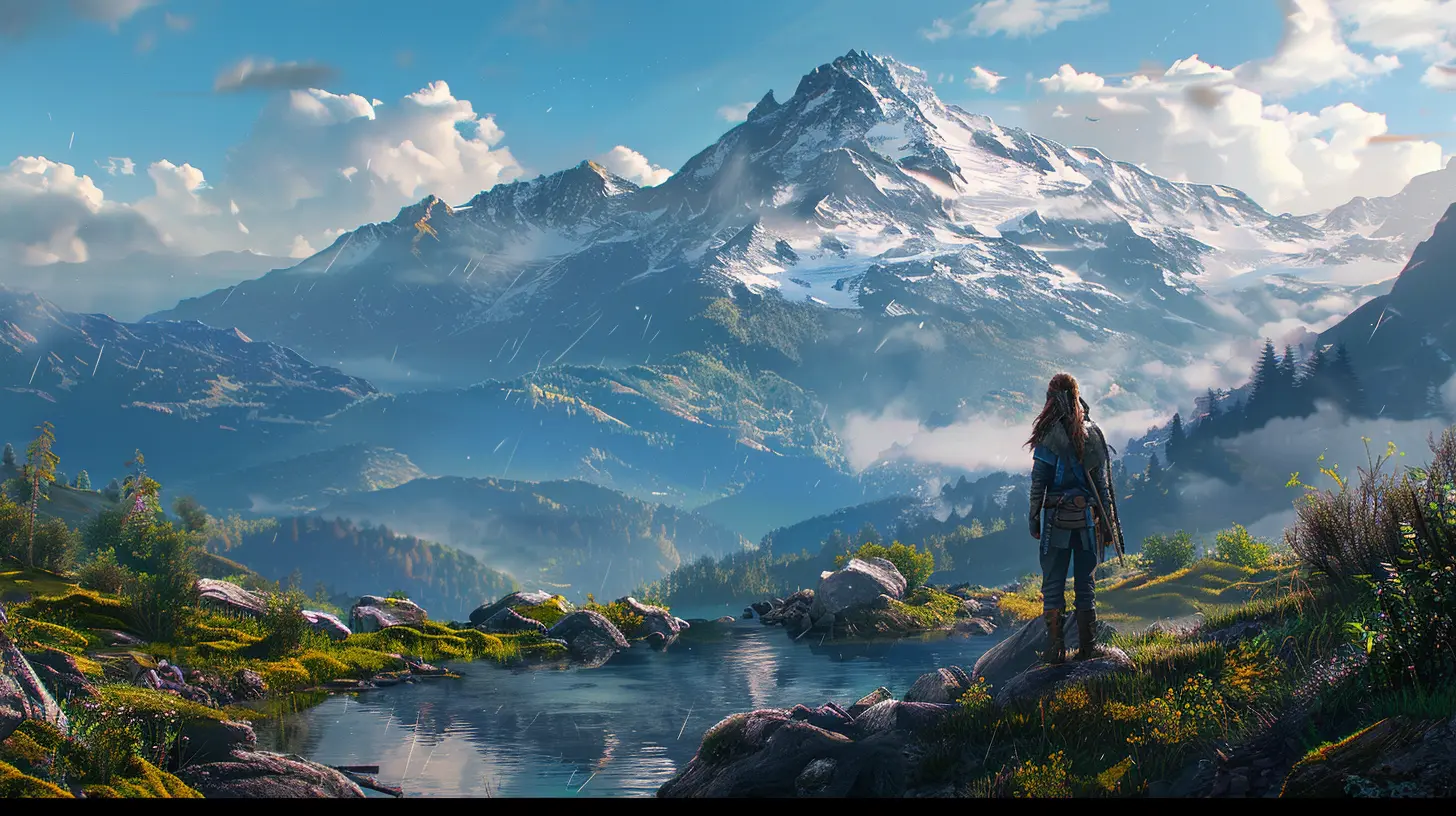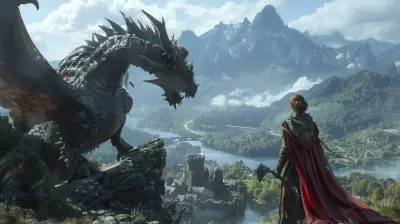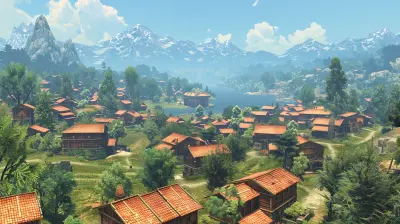8 April 2025
Alright, let’s take a second here: how often do you think about the environment when you’re gaming? If your first thought is, “Uh… when I’m using the fire flower in Super Mario Bros. to burn down bushes?” then, yeah, fair. But believe it or not, video games are becoming major players (pun intended) in environmental storytelling. Whether it’s lush post-apocalyptic landscapes, polluted dystopias, or vibrant ecosystems, video games are crushing it when it comes to environmental narratives. Move over, Hollywood—our controllers are doing the talking now.
So, why exactly are video games the shiny new frontier for this kind of storytelling? Grab your snacks, kick back, and let’s dive into this pixelated rabbit hole.
What Even Is Environmental Storytelling? (Hint: It's Cooler Than It Sounds)
First, let’s break it down. Environmental storytelling isn’t just about trees and animals. No, it’s about using the world itself to tell a story. It’s the way a crumbling building in a video game hints at a devastating past. It’s the eerie silence of a forest that makes you feel like something’s lurking. It’s the trash-filled streets of a cyberpunk city screaming, “People messed up!”—without actually saying it.In short, environmental storytelling is the art of embedding narrative into the surroundings. And who does that better than video games? Movies and TV shows can show you a landscape, sure. But in gaming, you don’t just look at it—you live in it, interact with it, and, if you’re anything like me, probably accidentally run off a cliff in it. Oops.
Why Video Games? Because We’re Nerds Who Care About Stuff
Still scratching your head? Let me break it down further. Video games have a unique advantage over books, movies, or even that climate change documentary your aunt forwarded you on Facebook. Games are immersive in a way these other mediums simply aren’t. When you’re playing, you’re not just watching a world unfold from the sidelines; you’re smack dab in the middle of it.This makes video games the perfect medium for environmental storytelling. Want players to experience the beauty of nature? Drop ’em into a sprawling open-world game like The Legend of Zelda: Breath of the Wild. Want to show them how humans might screw everything up? Unleash them in the industrial wastelands of Horizon Zero Dawn. You get the idea.
And here’s the kicker: because players are actively involved, these experiences hit differently. You’re not being lectured about the horrors of deforestation—you’re walking through a forest devastated by your in-game actions, and it feels personal. Like, “Oh no, this is MY fault. I’m really the villain here.”
Gamers Are Rule-Breakers (AKA the Perfect Target Audience)
Let’s face it—gamers are a stubborn, curious bunch. We poke around in every corner of a map, climb every mountain (even if there’s clearly no loot up there), and generally question everything. And that, my friends, is why video games shine as an environmental storytelling medium. The game might not outright tell us the story, but we’ll figure it out eventually. Like Sherlock Holmes, but in sweatpants.Take Fallout, for instance. The post-apocalyptic wasteland tells a story not through cutscenes but through its world. You piece together what happened by poking around old buildings and coming across skeletons holding tattered love letters. It’s subtle. It’s haunting. And it sticks with you in a way a PowerPoint lecture on climate change never could.
Top-Notch Examples of Environmental Storytelling in Gaming
Now that we’ve established how video games are crushing it, let’s get into some of the heavy hitters. These are the games that’ll make you cry, laugh, and maybe even reconsider how you treat the planet IRL.1. The Last of Us Series
If you’ve played The Last of Us, you know that nature finds a way. As you trek across abandoned cities in this iconic game, you’ll see vines and moss creeping over skyscrapers. Wildlife roams freely, reclaiming spaces humans vacated. It’s beautiful, but it’s also a little eerie—a not-so-subtle reminder that if humans mess things up badly enough, nature will simply move on without us. Yikes.2. Subnautica
This game is basically what would happen if Jacques Cousteau made a survival horror game. Set on an alien planet covered in water, you have to explore underwater ecosystems that are stunning, bizarre, and occasionally terrifying. But here’s the catch: it’s not just about gawking at alien fish. The story unfolds as you realize how your actions affect the environment and ecosystems. Overfish too much? That’s on you, buddy. Prepare for consequences.3. Red Dead Redemption 2
When you’re not busy robbing trains or accidentally running into a tree on horseback (been there), you might notice how Red Dead Redemption 2 uses its environment to tell a story. The world reacts to your choices—hunting animals too often leads to a noticeable decline in their population, while untouched areas flourish with wildlife. It’s a cowboy simulator, sure, but it’s also a quiet critique of how humans interact (or clash) with nature.
Okay, But Why Should We Care?
I know what you’re thinking. “Cool story, bro, but how does this impact me?” Glad you asked. These environmental narratives in video games do more than just entertain—they stick with players long after the credits roll. They make us think. They make us feel. They make us question our actions both in the game and in the real world.When you’ve seen a thriving world turn into a barren wasteland because of in-game choices, it’s hard not to think about real-world consequences. It’s like when you eat too much pizza and then feel guilty afterward—except this time it’s deforestation, pollution, and overconsumption making you feel queasy.
And let’s not forget: a lot of gamers are younger folks who will inherit this planet (thanks, Boomers). By subtly weaving environmental messages into gameplay, developers are planting seeds of awareness in the next generation. It’s sneaky, but in the best way possible.
How Game Developers Are Leveling Up (Pun Absolutely Intended)
Game studios aren’t just throwing trees into their games and calling it a day. No, they’re going deeper. They’re partnering with climate scientists, using cutting-edge tech to create realistic ecosystems, and even weaving environmental themes into game mechanics.Take Minecraft, for example. Mojang partnered with the United Nations to create “Block by Block,” a program that teaches players how to use the game for environmental planning in the real world. And then there’s Ubisoft, which incorporated climate change’s effects into the world of Assassin’s Creed Odyssey. It’s like they’re saying, “Hey, we know you’re here to stab bad guys with ancient spears, but also, ice caps are melting. Just FYI.”
Is This the Future of Storytelling?
Short answer: duh. Video games are only getting more realistic, more immersive, and more epic. As we head into an era where graphics look almost identical to real life (hello, uncanny valley), the potential for environmental storytelling is through the roof.Imagine playing a game where you make small choices—like how much water to consume or what crops to plant—and they snowball into massive outcomes for the in-game environment. Spoiler alert: these games already exist, and they’re about to get even better. It’s like SimCity met Mother Nature and decided to have a kid.
Final Thoughts
So, there you have it: video games are officially the new frontier for environmental storytelling. They’re immersive, emotional, and, frankly, way more fun than sitting through another depressing climate change lecture. Whether it’s guiding us through lush forests or scaring the pants off us with polluted nightmares, games are reshaping how we think about the world—and our role in it.Next time you’re wandering through a stunning game world, take a moment to pause. Look at the details. Listen to the sounds. Think about the story the environment is trying to tell. And maybe, just maybe, you’ll take those lessons into the real world too. Or, you know, you’ll just steal a car in GTA. No judgment.





Daphne Young
Video games aren’t just pixels and polygons; they’re immersive worlds that can teach us about our planet. By weaving environmental narratives into gameplay, developers can inspire change, making players not just heroes in a game, but advocates for our Earth.
April 13, 2025 at 4:56 PM